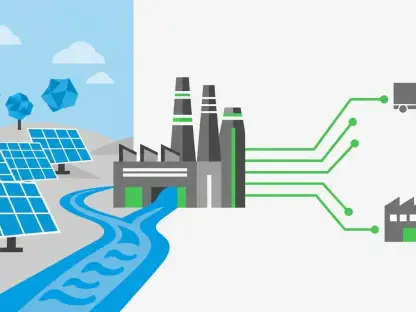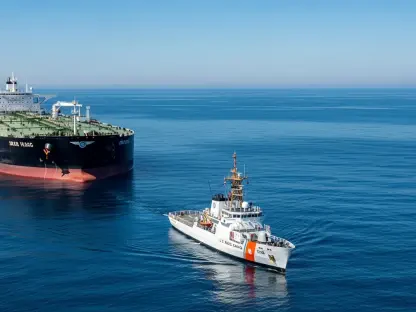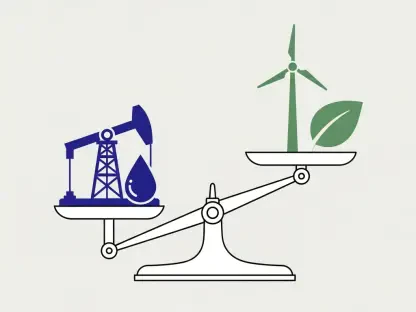What if a single handshake in Washington could alter the cost of filling up your gas tank halfway across the world? Picture a tense room where two leaders, U.S. President Donald Trump and Ukrainian President Volodymyr Zelenskiy, sit down to tackle Europe’s most devastating conflict in decades. This isn’t just a diplomatic photo-op; it’s a moment that could send shockwaves through global oil markets, affecting everything from your daily commute to the heating bill for your home. The stakes couldn’t be higher as energy prices teeter on the edge of uncertainty.
The significance of this meeting lies in its potential to reshape the energy landscape. With oil prices holding steady—Brent crude at $65.87 per barrel and U.S. West Texas Intermediate at $62.89—traders are watching for any hint of a peace deal in Ukraine that could unlock new supply chains. A resolution might ease the strain on global markets, while a stalemate could tighten the grip of volatility. This discussion is more than geopolitics; it’s a deciding factor for economic stability in countless households and businesses dependent on affordable energy.
Why This Meeting Could Shake Up Your Gas Bill
The Trump-Zelenskiy summit carries weight far beyond the walls of its venue. It’s a pivotal moment amid a war that has already disrupted energy flows across Europe and beyond. A single outcome—be it a step toward peace or a continued deadlock—could directly influence the price consumers pay at the pump. For many, this isn’t abstract news; it’s a real-world concern tied to monthly budgets and financial planning.
Energy markets are particularly sensitive to the ripples of this conflict. Ukraine’s strategic position as a transit hub for gas and oil means any shift in stability can alter supply routes overnight. If the talks hint at de-escalation, the market could see a surge in available resources, potentially driving down costs for gasoline and heating fuel. The average driver might not track diplomatic cables, but the effects of this meeting could show up in every gallon purchased.
Moreover, the global nature of oil pricing means that even distant nations feel the impact. Countries reliant on imported energy, from small economies to industrial giants, are bracing for possible fluctuations. A successful dialogue could offer relief to millions, while failure to progress might keep prices stubbornly high, squeezing disposable income for families everywhere.
The Stakes: Geopolitics and Oil Markets in a Fragile Balance
At the heart of this summit is a delicate interplay between war and economics. The ongoing conflict in Ukraine has already scrambled traditional energy pathways, keeping oil markets on edge. With prices hovering in a tense equilibrium, the possibility of a peace agreement could either stabilize or further unsettle this balance, depending on the commitments made during the talks.
Beyond immediate supply concerns, the broader geopolitical landscape adds layers of complexity. Major powers, including the U.S., India, and China, are entangled in the consequences of disrupted trade routes and shifting alliances. The war’s influence extends to economic policies that dictate energy availability worldwide, making the outcome of this meeting a potential turning point for international stability and market confidence.
For businesses and consumers, the implications are tangible. A breakthrough could lower operational costs for industries reliant on fuel, while prolonged uncertainty might force companies to pass on higher expenses to customers. The ripple effect of these talks could redefine the affordability of essential goods, highlighting how distant conflicts shape everyday life in interconnected ways.
Unpacking the Oil Price Puzzle: Key Factors at Play
Several critical elements link the Trump-Zelenskiy dialogue to oil market volatility. One major factor is the potential for a peace deal to unlock additional crude and gas supplies from the region. Ole Hansen of Saxo Bank points out that markets may not have fully priced in a “peace dividend,” suggesting that a resolution could lead to a notable drop in Brent crude and European gas prices, offering relief to strained economies.
Another pressing issue is the ongoing tension surrounding Russian oil exports. White House adviser Peter Navarro has publicly criticized India for serving as a conduit for embargoed Russian crude, indirectly supporting Moscow’s war efforts. Analyst Priyanka Sachdeva from Phillip Nova warns that such diplomatic friction keeps energy flows vulnerable, as any sudden policy shift could disrupt supply chains and push prices upward despite peace prospects.
Additionally, external economic pressures play a significant role. The upcoming Jackson Hole meeting, where Federal Reserve Chairman Jerome Powell will address potential interest rate cuts, could sway stock markets and influence oil demand in the U.S., the world’s largest economy. These overlapping dynamics—geopolitical resolutions, trade disputes, and monetary policies—create a complex web where oil prices remain precariously poised for movement in any direction.
Voices from the Field: Expert Insights and Global Perspectives
Industry analysts and policymakers offer a range of views on the potential fallout from this high-stakes meeting. Ole Hansen from Saxo Bank emphasizes the overlooked upside of a peace agreement, noting that an unexpected supply increase could catch markets off guard, leading to sharper price declines than anticipated. His perspective underscores the latent opportunities within diplomatic progress.
On a contrasting note, Priyanka Sachdeva of Phillip Nova highlights the persistent risks tied to energy trade disputes. The ongoing controversy over Russian oil funneled through intermediaries like India keeps supply chains fragile, even as peace talks advance. This insight reveals how interconnected trade policies can undermine gains from conflict resolution, maintaining a cloud of uncertainty over market forecasts.
From a diplomatic angle, recent interactions between Trump and Russian President Vladimir Putin in Alaska, focusing on a comprehensive peace deal rather than a temporary ceasefire, inject cautious hope into the equation. Yet, Trump’s mention of possible retaliatory tariffs on nations like China for engaging with Russian oil keeps the specter of supply disruptions alive. These varied viewpoints collectively illustrate a market teetering on the brink, awaiting definitive signals from Washington.
Navigating the Uncertainty: What Traders and Consumers Can Watch For
Amid the unpredictability surrounding the Trump-Zelenskiy summit, there are actionable steps for staying informed. Traders and consumers alike should closely follow official statements emerging from the meeting for any indication of a peace resolution. A clear commitment to ending hostilities could foreshadow a drop in crude and gas prices as supply constraints ease, offering a window for strategic adjustments.
Attention should also be paid to evolving U.S. trade policies, particularly regarding sanctions or tariffs tied to Russian oil dealings with countries like India and China. Any escalation in these areas could offset the benefits of a peace deal by tightening global supply, pushing energy costs higher. Monitoring these developments provides a critical edge in anticipating market shifts.
Finally, keeping tabs on U.S. economic indicators, such as the Federal Reserve’s stance at Jackson Hole, is essential. Interest rate cuts could stimulate economic activity and boost oil demand, potentially countering supply-side relief from a peace agreement. By tracking these key areas—peace signals, trade tensions, and economic policies—both market participants and everyday individuals can better prepare for the financial impacts of this historic encounter.
Looking back, the Trump-Zelenskiy meeting stood as a defining moment for oil markets, encapsulating the intricate dance between diplomacy and economics. Reflecting on its outcomes, stakeholders gained a clearer picture of how to brace for volatility or capitalize on stability. Moving forward, the focus shifted to sustained monitoring of geopolitical trends and policy shifts, ensuring readiness for the next wave of change. Adapting to these insights became crucial, as the energy landscape continued to evolve with every handshake and headline.









